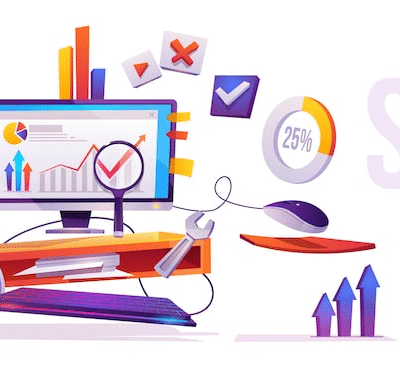In 2025, businesses are no longer questioning whether they should sell online—they’re focused on how to do it better. Platforms like Shopify 2.0 have revolutionized the way entrepreneurs build and scale their digital storefronts. The introduction of Shopify Online Store 2.0 has given merchants more flexibility, customization, and speed than ever before, while a new generation of Shopify 2.0 themes ensures visually stunning and performance-optimized designs that work for a wide range of industries.
The Evolution of Shopify for Modern Businesses
Over the past decade, Shopify has transformed from a simple eCommerce tool into a robust, all-in-one business platform. But the shift to Shopify 2.0 marked a turning point. This upgrade wasn’t just a facelift—it restructured the framework to give developers and business owners unprecedented control over content and design.
The improvements were timely. With customers expecting lightning-fast load times, mobile-friendly layouts, and personalized shopping experiences, businesses needed a solution that was both scalable and easy to manage. Shopify 2.0 delivered with a modular architecture, customizable sections on every page, and deeper integration capabilities.
Why Template-Based Websites Still Work in 2025
Some businesses think custom-coded websites are the only way to stand out, but that’s not always true. Template-based websites have evolved dramatically. Today’s templates are not cookie-cutter; they’re flexible starting points that blend professional design with room for customization.
For small to mid-sized businesses, using a well-optimized template can save weeks—or even months—of development time. Modern Shopify templates offer:
- Pre-designed layouts optimized for conversions
- Mobile-first responsiveness
- Built-in SEO considerations
- Drag-and-drop editing for non-technical teams
In 2025, these templates are far from static—they can be adapted, branded, and extended with apps or custom code to meet unique business needs.
The Power of Shopify’s Block-Based Editing
One of the standout features of the 2.0 update is block-based editing. This means each element—be it a product gallery, call-to-action banner, or testimonial section—can be moved, added, or removed without touching a single line of code.
For businesses, this offers two major benefits:
- Speed: Updates and seasonal changes can be made in minutes.
- Consistency: Templates ensure design cohesion across all pages.
By combining block-based editing with a template-based approach, even small businesses with limited resources can maintain a polished, professional website.
How Shopify Development Has Changed in 2025
For developers, Shopify development in 2025 is about balancing flexibility with performance. The platform now supports more complex APIs, allowing for integrations with headless CMSs, AI-powered recommendation engines, and advanced analytics tools.
At the same time, speed and user experience remain top priorities. Developers often start with a high-quality template and then enhance it with:
-
Custom liquid code snippets
-
Performance optimizations
-
Accessibility improvements
-
Third-party integrations
The result is a hybrid approach—half template, half custom—that offers the best of both worlds.
Template-Based Websites for Scaling Businesses
Template-based Shopify websites are no longer just for startups. Larger brands are also leveraging them for quick product launches, seasonal campaigns, and regional store variations.
For example, a global retailer might use a core template to maintain brand consistency across multiple country-specific websites, while still customizing language, currency, and promotions for local markets. This approach reduces development costs while keeping marketing teams agile.
Trends Shaping Shopify Templates in 2025
Design and functionality trends in Shopify templates have shifted to reflect consumer behavior and technology advancements:
- AI-Personalized Experiences: Templates now integrate with AI tools that adjust product recommendations and homepage layouts based on user behavior.
- Micro-Animations: Subtle motion effects that enhance engagement without slowing down load times.
- Sustainability Features: More templates include sections dedicated to eco-friendly initiatives, carbon offset programs, and ethical sourcing.
- Shoppable Video Blocks: Integrations that let customers purchase directly from embedded videos.
These trends show how templates are adapting to a more interactive, conscious, and content-driven eCommerce environment.
SEO and Performance Benefits of Modern Templates
One of the misconceptions about template-based websites is that they’re less SEO-friendly. In reality, many premium Shopify templates are built with SEO in mind. They come with:
- Schema markup for better search engine understanding
- Optimized image handling for faster page speeds
- Clean code structure for easy indexing
For businesses, this means less time worrying about technical SEO and more time focusing on content and customer engagement.
The Role of Apps and Extensions
While templates provide the structure, Shopify’s app ecosystem fills in the functionality gaps. Businesses can add apps for:
- Subscription management
- Loyalty programs
- Advanced analytics
- Social commerce integrations
Because Shopify’s architecture in 2025 is more flexible, these apps can integrate seamlessly without bloating site performance.
Choosing the Right Template in 2025
The key to making a template work for your business lies in selection. Factors to consider include:
- Industry relevance
- Customization options
- Built-in features
- Compatibility with essential apps
- Performance ratings
Investing in a high-quality template from the start reduces the need for heavy modifications later.
Final Thoughts
In 2025, Shopify development isn’t about choosing between templates and custom builds—it’s about using both strategically. Templates offer a fast, cost-effective foundation, while Shopify’s advanced development capabilities allow businesses to layer on unique features and branding.
With the flexibility of Shopify 2.0, the power of modern templates, and a robust ecosystem of apps, businesses can create online stores that are both beautiful and high-performing. Whether you’re launching your first product or scaling to international markets, the right combination of Shopify’s tools and thoughtful design choices can set your brand apart in the competitive eCommerce space.


